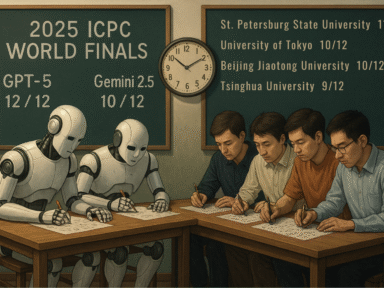– These models run up to 10x faster on domestic Chinese chips compared to traditional AI approaches
– SpikingBrain technology significantly reduces power consumption while maintaining performance
– This innovation represents China’s strategic push for AI self-sufficiency amid US export restrictions
– The technology could potentially close the gap between Chinese and Western AI capabilities
How SpikingBrain Models Transform AI Computing
China has unveiled groundbreaking SpikingBrain AI models that fundamentally change how artificial intelligence operates. Unlike conventional AI systems that process information continuously, these brain-inspired models communicate through discrete spikes of activity—similar to biological neurons. This approach dramatically reduces computational requirements while maintaining performance. Developed by researchers at Tsinghua University, these models run significantly faster on China’s domestic Huawei Ascend chips, showcasing speeds up to 10 times faster than traditional models while using just a fraction of the power.
Strategic Importance for China’s AI Independence
The SpikingBrain breakthrough comes at a critical time for China’s AI ambitions. With US export restrictions limiting access to advanced NVIDIA chips, these efficient models represent a strategic workaround. By optimizing AI to work effectively on domestic hardware, China is reducing its dependency on foreign technology. The models are already being deployed in applications ranging from autonomous vehicles to industrial automation, with performance that approaches or matches conventional AI systems in many tasks.
What This Means for Global AI Competition
This development signals a potential shift in the global AI landscape. While Western companies have dominated AI with powerful hardware and large language models, China’s approach focuses on efficiency and specialized applications. The SpikingBrain models demonstrate that alternative AI architectures can overcome hardware limitations. Industry experts suggest this could accelerate China’s AI capabilities despite trade restrictions, potentially narrowing the technological gap with Western competitors in specific domains where efficiency matters more than raw computing power.
What makes SpikingBrain AI models different from traditional AI?
SpikingBrain models mimic biological neural networks by communicating through discrete spikes rather than continuous signals. This approach is significantly more energy-efficient and can run faster on less powerful hardware compared to traditional deep learning models.
Why are these models important for China’s AI development?
These models allow China to advance its AI capabilities despite US restrictions on high-end chip exports. By optimizing AI to run efficiently on domestic chips, China can continue AI development without relying on foreign technology, supporting its goal of technological self-sufficiency.
How much faster are SpikingBrain models compared to traditional AI?
According to reports, SpikingBrain models can run up to 10 times faster on Chinese domestic chips compared to traditional AI approaches. They also consume significantly less power while maintaining comparable performance for many applications.
What applications can benefit from SpikingBrain technology?
SpikingBrain models are particularly valuable for edge computing applications where power and processing capabilities are limited, including autonomous vehicles, industrial automation, smart devices, and surveillance systems. They enable AI capabilities in scenarios where traditional models would be too resource-intensive.
Could SpikingBrain models help China catch up with Western AI capabilities?
While Western companies still lead in large-scale AI models, SpikingBrain technology could help China close the gap in specific domains where efficiency is paramount. This approach represents a different strategy that leverages China’s strengths in specialized applications rather than competing directly on the same technological front.
Are these models comparable in capability to large language models like GPT?
SpikingBrain models excel in different areas than large language models. They’re not designed to replace general-purpose AI systems like GPT but instead offer superior efficiency for specialized tasks, particularly those requiring real-time processing with limited computational resources.
How does this development impact the global AI competition?
This innovation demonstrates that multiple paths to AI advancement exist beyond the dominant paradigm of ever-larger models on increasingly powerful hardware. It could lead to greater diversification in AI approaches globally and potentially accelerate development in energy-efficient AI systems.
















How would you rate SpikingBrain AI Models: 5X Faster Performance on Chinese Chips?